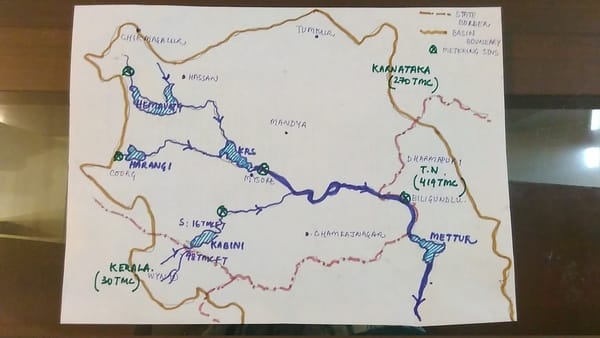-
See the map to Identify the 4 major reservoirs in Karnataka : Hemavathy, Harangi, KRS and Kabini. Inflows and Outflows to all 4 reservoirs are monitored and known and this forms the basis of all calculations
-
The river flows into TN and at Biligundlu there is a measuring station that tells you how much water flows into TN from Karnataka
-
The water that flows into the river downstream of KRS and Kabini is measured at Biligundlu, is expected to flow in from about 22,000 sqm and in an average year can contribute about 80TMC.
-
About 740TMC is the total water that is expected to flow into the river (from all states)
-
Of this the following allocations have been made (the states are entitled to the following volumes of water
-
Kerala: 30TMC
-
Karnataka: 270TMC
-
TN : 419TMC
-
-
The total inflows into the river from Karnataka is 462TMC. Of the 462 TMC, Karnataka can keep 270TMC for itself and has to give TN 192 TMC (this is measured at Biligundlu). For the purpose of this post, we assume that the basis of this split is agreed upon (270 keep, 192 give)
-
So if you see the only real numbers that matter are, irrespective of rainfall across the catchment, based on the total inflows in Karnataka,What Karnataka keeps 270—————————– = ——What Karnataka gives TN 192

The flow of the Kaveri till she reaches Mettur
The flow of the Kaveri till she reaches Mettur